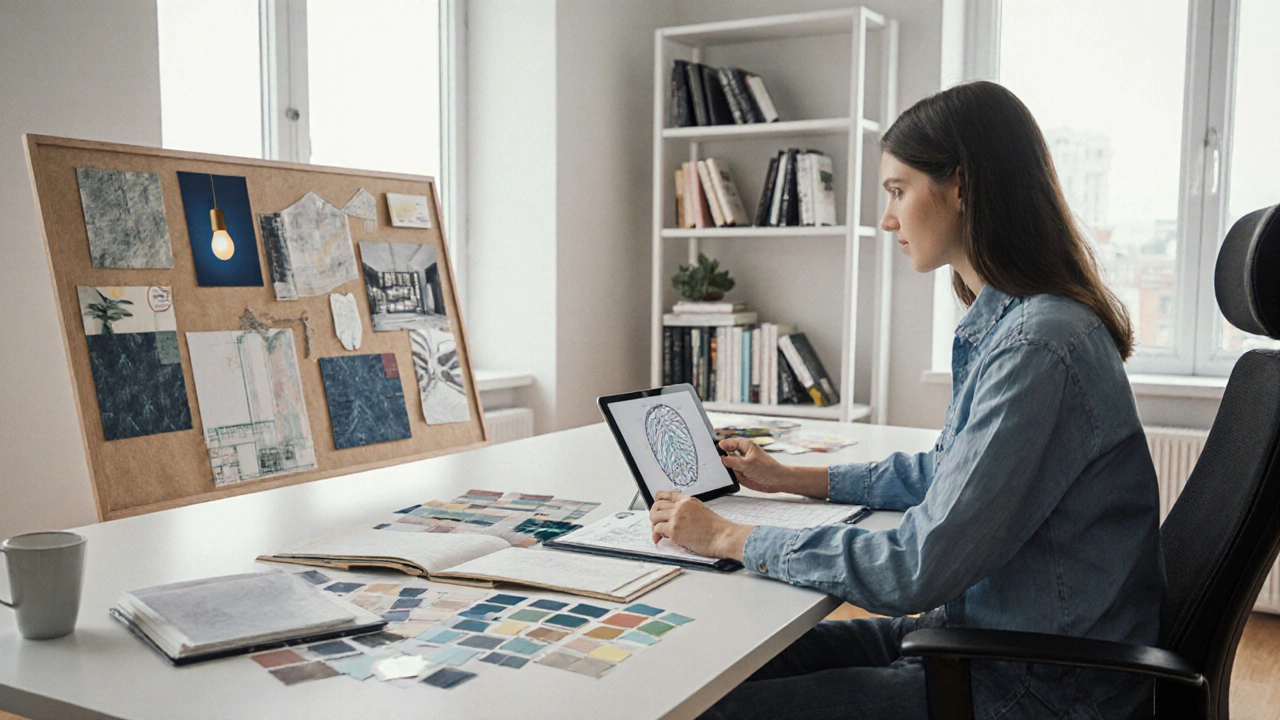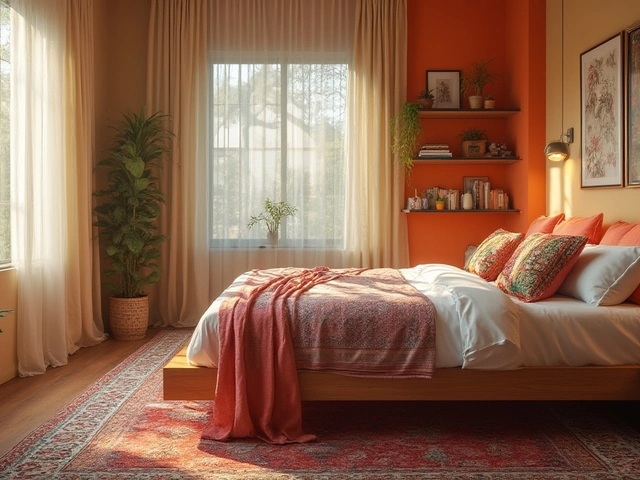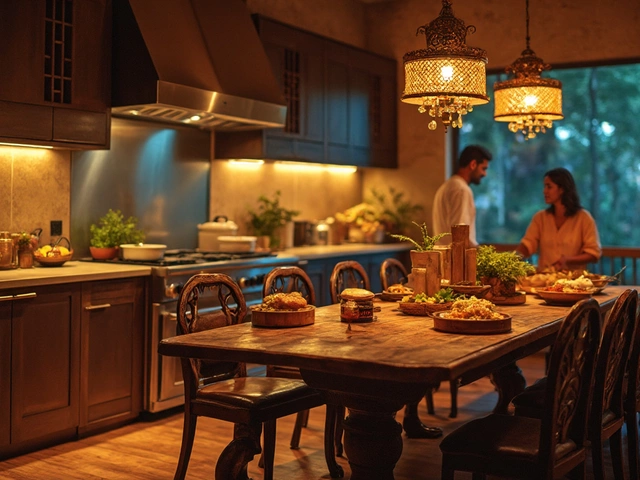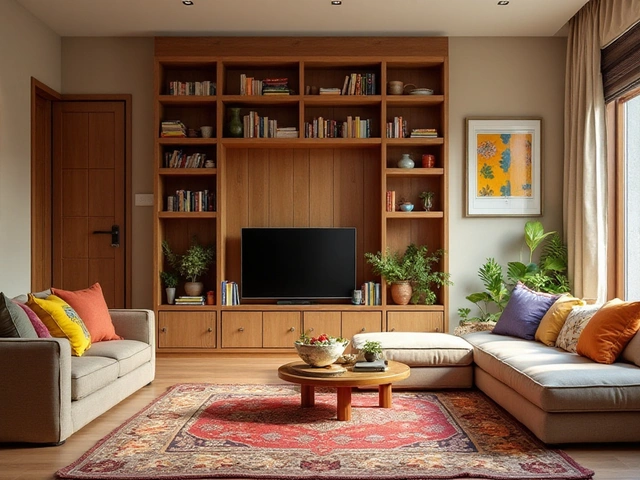Interior Design Learning Time Calculator
Estimate Your Learning Timeline
Answer a few quick questions to get a personalized estimate of how long it will take to learn interior design based on your situation.
When people ask, learn interior design, they usually want a concrete answer: how many months, years, or weeks will it actually take? Interior Design is a creative discipline that blends art, architecture, and psychology to shape the feel of living and working spaces. It involves mastering colour theory, space planning, materials, lighting, and client communication, plus getting comfortable with industry‑standard software. The answer isn’t a one‑size‑fits‑all number, but you can map out a realistic timeline by looking at the most common learning routes and the milestones they contain.
What Influences the Learning Timeline?
Before diving into exact durations, consider the three biggest factors that stretch or shrink the clock:
- Prior background: If you already have a design or architecture degree, you’ll skip the basics and move straight into specialised interior modules.
- Learning method: Full‑time university programmes speed you up, whereas part‑time or self‑paced online courses can extend the calendar but offer flexibility.
- Depth of expertise you aim for: Some people stop at a solid portfolio and start freelancing; others chase a master’s degree and a niche specialty like sustainable design.
Understanding where you sit on these three axes helps you set a personal timeline instead of borrowing someone else’s.
Typical Paths and Their Timeframes
Below is a quick snapshot of the most popular ways to become competent in interior design. The table breaks down each route by typical length, cost range, the credential you earn, and who it suits best.
| Path | Typical Duration | Cost (AUD) | Credential | Best For |
|---|---|---|---|---|
| Full‑time Bachelor of Interior Design | 3‑4 years | 30,000‑45,000 | Bachelor’s degree | Students seeking a solid academic foundation and accreditation |
| Part‑time Associate Degree or Diploma | 2‑3 years (evenings/weekends) | 15,000‑25,000 | Associate/Diploma | Working professionals who need flexibility |
| Online Certificate Course (e.g., Online Interior Design Course a structured series of video lessons, assignments, and mentor feedback) | 6‑12 months | 2,000‑6,000 | Certificate of Completion | Self‑motivated learners who want a quick start |
| Apprenticeship or Mentorship | 1‑2 years (on‑the‑job) | Often paid; minimal tuition | Portfolio + reference letters | Hands‑on learners who value real‑world experience |
| Master’s in Interior Architecture/Design | 1‑2 years (full‑time) | 25,000‑35,000 | Master’s degree | Design professionals aiming for leadership or research roles |
Notice the overlap: a 12‑month online certificate can give you a functional skill set, while a three‑year bachelor’s degree adds depth, theory, and a recognised credential. Choose the path that aligns with your current life stage and career ambitions.
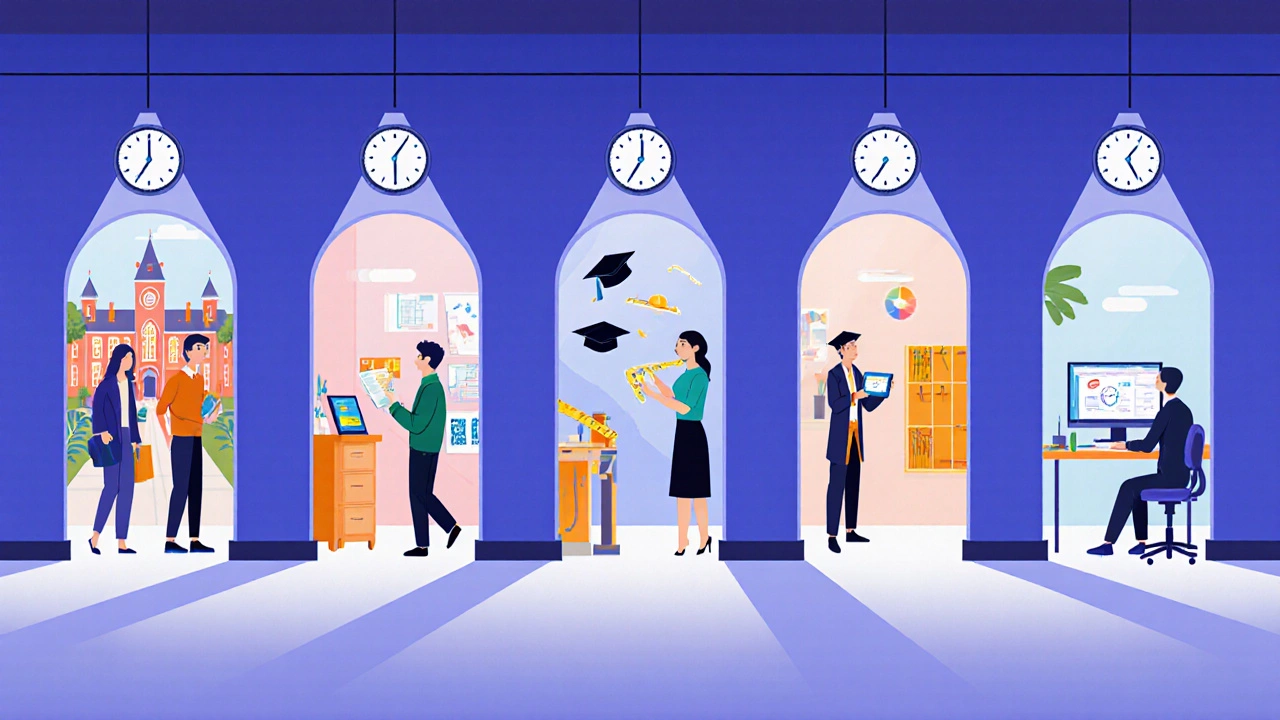
Core Skills and When You Usually Pick Them Up
Regardless of the route, interior design education falls into a series of skill blocks. Mapping them onto calendar months helps you gauge progress.
- Month 1‑3: Design Foundations - colour theory, basic drafting, and material knowledge. Most programmes start here.
- Month 4‑6: Spatial Planning & Lighting - learning to draw floor plans, create 3‑D mock‑ups, and understand natural vs. artificial light.
- Month 7‑9: Software Proficiency - AutoCAD industry‑standard 2‑D drafting software, SketchUp quick 3‑D modelling tool, and Revit BIM platform for detailed construction documents. Mastery typically takes 100‑150 hours of guided practice.
- Month 10‑12: Client Interaction & Business Basics - writing proposals, budgeting, and presenting mood boards.
- Month 13‑18: Specialisation - residential vs. commercial, sustainable design, or historic restoration. Optional but highly valued.
- Month 19‑24: Portfolio Development - compiling real‑world projects, mock‑up case studies, and freelance work into a professional showcase.
If you follow a full‑time degree, these blocks are compressed into semesters; part‑time learners will experience them over a longer calendar, but the sequence stays the same.
Accelerating Your Learning Curve
Want to cut the time without compromising quality? Here are five proven tactics:
- Combine theory with practice. For every concept you study, immediately apply it to a small side project - redesign your own living room, create a mood board for a friend’s office, etc.
- Leverage free resources. Platforms like YouTube host detailed tutorials on AutoCAD shortcuts or colour psychology. Pair them with paid courses for depth.
- Join a professional organization early. ASID (American Society of Interior Designers) offers student memberships, webinars, and networking events - exposure to industry trends speeds up knowledge absorption.
- Find a mentor. Even a monthly 30‑minute coffee chat with a seasoned designer can shave weeks off your learning curve by answering specific questions.
- Set measurable milestones. Instead of vague “be good at SketchUp,” aim for “complete 5 fully furnished 3‑D models in 4 weeks.” Measurable goals keep you on track.

Real‑World Timeline Stories
Below are three snapshots from people who started their interior design journeys in 2023‑2024. Their experiences illustrate how the variables we discussed play out.
- Emma, 28, Sydney - Completed a 2‑year part‑time diploma while working full‑time as a sales associate. She spent evenings on coursework and weekends on client brief simulations. After 24 months, she built a portfolio that landed her a junior designer role.
- David, 22, Melbourne - Enrolled in a full‑time bachelor’s program. In 3.5 years he earned a degree, interned at a boutique firm for 6 months, and now works as a design assistant. His total calendar time: 42 months.
- Lena, 35, Brisbane - Opted for a 9‑month intensive online certificate plus a 6‑month apprenticeship with a local firm. She focused on software and portfolio creation, and within 15 months she launched a freelance business.
Each path reflects a different balance of time, cost, and commitment. The common denominator? Clear milestones and intentional practice.
What Happens After You Finish Learning?
Finishing a course is just the start. The next steps solidify your career trajectory:
- Build a strong portfolio. Showcase 8‑10 projects that demonstrate variety - residential, commercial, sustainable, and a personal design experiment.
- Get certified. In Australia, the IIDA (International Interior Design Association) offers a Certified Interior Designer credential based on education and experience can boost credibility.
- Network. Attend local design expos, join Facebook groups, and volunteer for community design projects.
- Consider specialization. If you love sustainability, pursue Green Building certification; if you enjoy tech, explore smart‑home integration.
Each of these actions typically takes an additional 3‑6 months, but they’re essential for turning learning time into earning potential.
Frequently Asked Questions
How long does a part‑time interior design diploma usually take?
Most part‑time diplomas span 2 to 3years, with classes held evenings or weekends. The exact length depends on the institution’s credit requirements and your personal pace.
Can I become a professional interior designer without a university degree?
Yes. Many successful designers start with an online certificate, build a solid portfolio, and gain experience through apprenticeships. In Australia, you can also register with professional bodies that recognise work‑based learning.
What software should I learn first?
Start with AutoCAD for 2‑D drafting, then move to SketchUp for quick 3‑D visualisation. Once comfortable, add Revit for BIM workflows if you aim for larger commercial projects.
How much time should I allocate each week to practice?
Aim for 8‑10hours of focused practice. Split it between theory (2hours) and hands‑on work like modelling a room or drafting a plan (6‑8hours). Consistency beats occasional marathon sessions.
Is a portfolio more important than a degree?
For many employers, a strong portfolio trumps credentials. It shows you can solve real problems. However, a degree still opens doors to larger firms and can be a requirement for certain registrations.
What is the average salary after 2years of experience?
In Australia, junior interior designers earn between AUD55,000and70,000 per year. With a solid portfolio and a few successful projects, you can negotiate higher rates, especially in freelance work.
